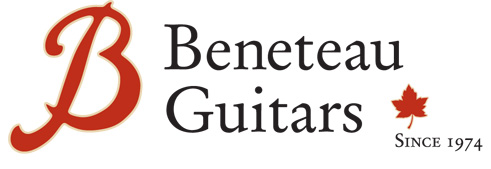When I built my first guitar in 1974 which, incidentally, I still have, I was under no illusions as to the quality of the finished product. In fact, I used an old set of Kluson tuners salvaged from a Gibson I had owned, thinking that I wanted to improve my skills before spending hard earned money on new machine heads. Those Kluson tuners were not particularly good but still found their way onto some quality instruments of the time. This would probably not happen today, at least not on a hand built guitar. Interestingly, our choices are better now than they were 20 years ago. Back then, if looking for a high quality tuner, the choice was either Grover or Schaller (if you could find them). Things have certainly changed! Gotoh has become a big player and of course Waverly now practically owns the market for high end vintage style tuners. The following are my thoughts on these products based on my experience with them.
Grover
This company completely dominated the luxury tuner market before the 1980's. Unfortunately, quality control started to slip and consequently, so did their reputation. As a result, I rarely use them now except when requested specifically. I’ve always liked the style of the Grover Rotomatic and the new ones are nicely finished. Time will tell if they can recapture their place in the market.
Schaller
The M6 enclosed tuner has been a mainstay on quality instruments for years and I have used them with great success. In addition to a well deserved reputation for solid construction, they are also very nicely finished. Lately Schaller has been pouring it on with with new and innovative designs, as pictured.
Gotoh
I started using Gotoh machine heads in the 1980s and now use them almost exclusively. Their 510 series is my first choice and, in my opinion, unsurpassed for a factory made sealed tuner. The fact that I have used Gotohs on hundreds of guitars without a problem tells me I made the right choice. Beautiful tuners!
Waverly
Here’s a success story! Talk about filling a much needed gap in the market. These are beautiful, vintage style tuners that not only look gorgeous, but are made to the highest exacting standards. The whole package! To my mind, the best thing about Waverlys is their vintage look. For example, on my slotted head models (00012 and 0012), this is the exact look I want. Before Waverlys came along, the choices for this style of instrument were extremely limited. The downside for some people is the price. They are expensive but many others feel that when buying a handbuilt instrument, the extra cost of Waverly tuners is worthwhile.
Waverly Copies
Left to Right: Waverly, Gotoh, Grover, Schaller.
Note: All of these tuners are available in different finishes and tuner-button materials such as, Ivoroid, Snakewood, Ebony, Nicklel and more.
It’s worth mentioning 3 new players in this field. Gotoh, Grover and Schaller have introduced Waverly style tuners in answer to this hot new market. I’ve just received a set of the Schallers and they’ve done a good job. The Gotohs are very interesting from a couple of standpoints. Their mechanics are very good with no perceptible backlash. In this they fall somewhere between Schaller and Waverly. The other point of interest is that they’ve standardized the dimensions to almost identical as Waverlys. One could always start off with Gotohs and, if desired, could switch to Waverlys later on. A handy marketing move, I must say. The Schallers and Gotohs are both priced lower than Waverly and, as such, should have no problem capturing a place in the "vintage look" market.






